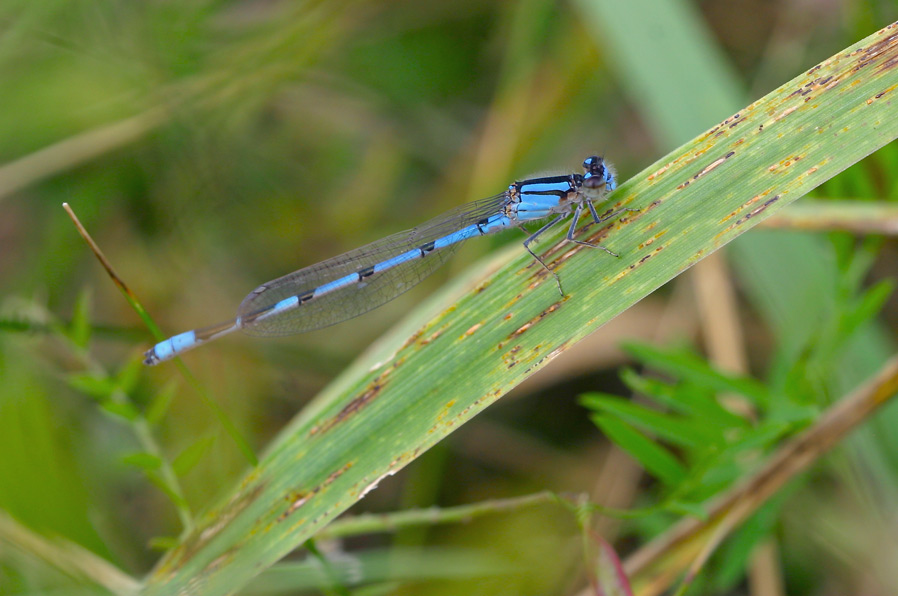A pond damselfly rests on a leaf in the Quarry over the weekend. © BCP 2010
Over the weekend, I was parked in the little parking lot that surrounds the shops of the Quarry, at the intersection of Clonmore and Gerrard St. East in the Upper Beach. While there, I happened to notice that the air was alive with what I always think of as helicopters — the giant dragonflies that seem to appear out of thin air in the fall. My business done, I decided to take a walk in the fields behind the shops to see if I could get a better look at the dragonflies, and possibly identify them. Ignoring the signs warning that parking for the purposes of dog walking was strictly forbidden — after all, they didn’t say anything about parking for the purposes of taking pictures — I made my way down a bit of an enbankment into the Quarry lands.
Squish, squish. Argh. Wet feet. In my enthusiasm to go running after the dragonflies, I didn’t put two and two together. . . where there are odonates, there’s gotta be water nearby. I have to say in my own defence that the huge field — a veritable wild garden of golden rod, bushy asters, yellow goatsbeard, butter-and-eggs, white sweet clover, bird’sfoot trefoil and New England asters this time of year — didn’t look swampy in places…
Oh well. I had quite an adventure — even a bit of a scare — that I will describe in another post. For now, though, I can report that while I wasn’t successful in getting a picture of any of the helicopters, I’m pretty sure that they were mostly 12-spotted skimmers (Libellula pulchella) and common green darners (Anax junius). I intend to go back as soon as I can to try again.
In the meantime, I did find a pond damselfly that was willing to have its picture taken. My beautiful electric blue friend is a bluet of some sort, possibly a Hagen’s bluet. I don’t think it’s possible to get an exact ID in the field, as close examination with a loop or magnifying glass is required to see some of the anatomical features that distinguish one species from the next.
My book on odonates (Field Guide to The Dragonflies and Damselflies of Algonquin Provincial Park and the Surrounding Area, 2008) says that bluets are typically mid-summer fliers. But since it’s written for the highlands of Algonquin Park, where the nights get cooler more quickly than they do here in the big city, perhaps that restriction doesn’t apply. I saw what were clearly bluets at Cherry Beach a few days ago, too, so perhaps they fly longer here in the relative south.
If anyone has a better idea what my damselfly specimen is, please let me know!
© BCP 2010




no comments